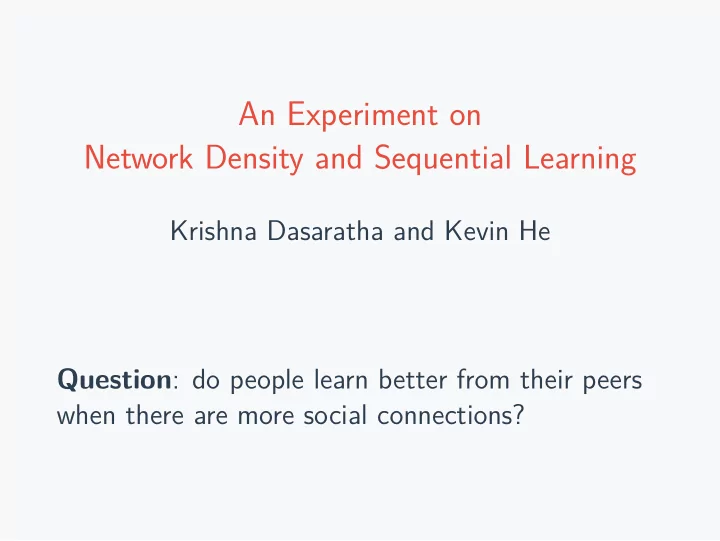

An Experiment on Network Density and Sequential Learning Krishna Dasaratha and Kevin He Question : do people learn better from their peers when there are more social connections?
Overview Sequential Social Learning : people take turns guessing an unknown state, after observing a private signal and some predecessors’ guesses (Banerjee, 1992 and Bikhchandani, Hirshleifer, and Welch, 1992) This paper : an Amazon MTurk experiment comparing learning outcomes when people have many social observations (dense network) versus few social observations (sparse network) Results: • Social learning is worse with more social observations • Accuracy gain from social learning twice as large on sparse network vs. dense network • Matches predictions of a naive learning model but not rational learning model 1
Basic Setup Basic setup • Binary state of the world ω ∈ { L , R } , equally likely • Sequence of 40 subejcts indexed by i = 1 , 2 , 3 , ... , move in turn On agent i ’s turn • Observe private signal s i • Observe guess of each predecessor with probability 1 4 (sparse network) or 3 4 (dense network) • Choose guess a i ∈ { L , R } to match state 2
Results Accuracy gain from social learning : • In dense networks, last 8 agents guess correctly 5.7% more often than if they had no social observations • This accuracy gain is 12.6% in sparse networks, more than twice as large ( p -value 0.0239) Mechanism : • This comparative static is consistent with a naive-learning model but not with the rational-learning model • Under naive learning, early subjects’ private signals are overcounted • This overcounting is more severe on denser networks 3
Recommend
More recommend